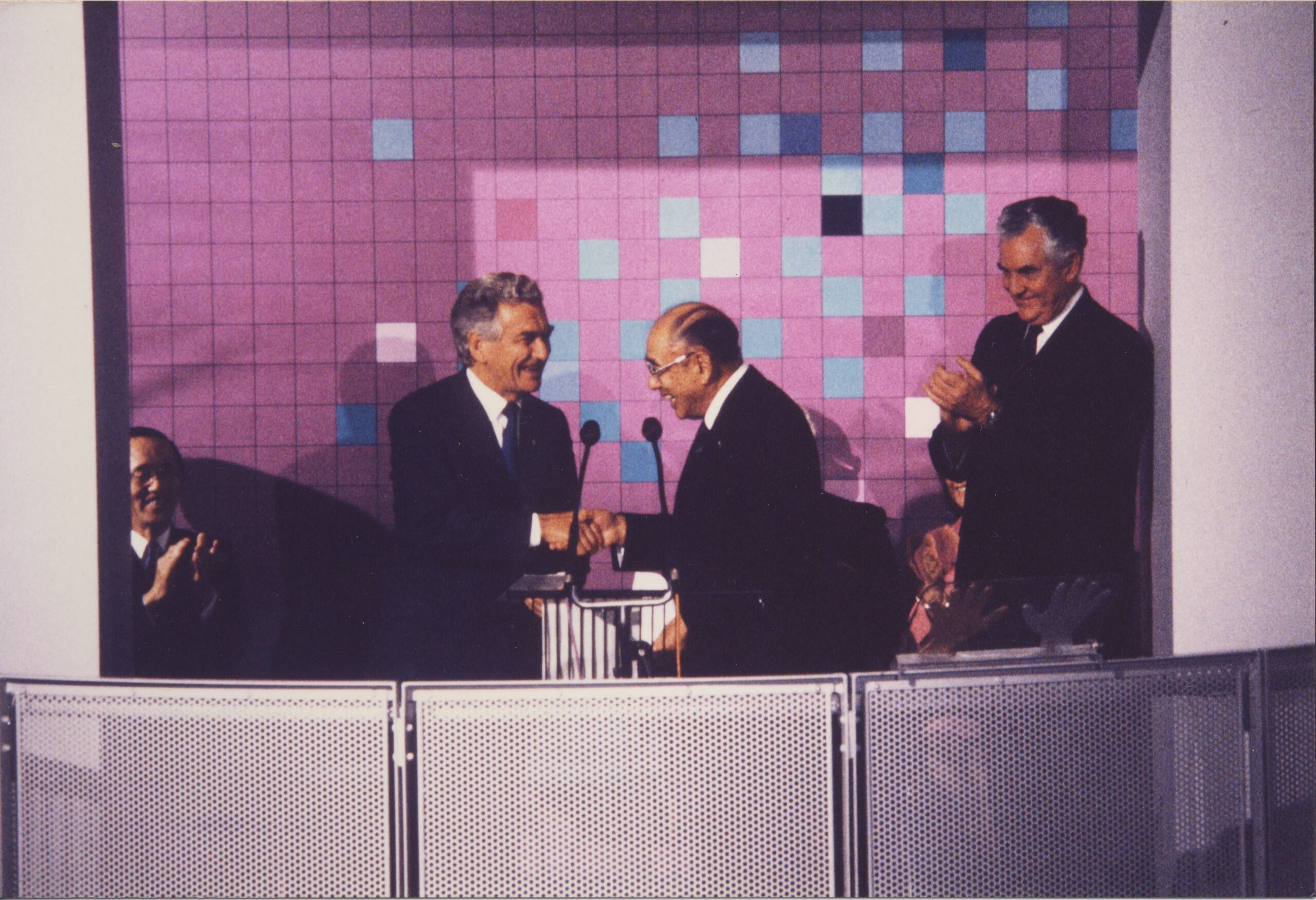 In 1986, the Australian Parliament approved the construction of the National Science and Technology Centre. In the same year, the Japanese Government and business community agreed to support half the cost of building Questacon, providing ¥1 billion (equivalent to A$10 million) as a Bicentennial gift to the Government and people of Australia.
In 1986, the Australian Parliament approved the construction of the National Science and Technology Centre. In the same year, the Japanese Government and business community agreed to support half the cost of building Questacon, providing ¥1 billion (equivalent to A$10 million) as a Bicentennial gift to the Government and people of Australia.
Questacon’s strong and ongoing relationship with Japan has played a key role in Questacon’s growth as a national and international hub for science communication and engagement. Over the years, Questacon has had the privilege of hosting distinguished Japanese guests, fostering rich exchanges and forging partnerships with esteemed Japanese scientific and cultural institutions.
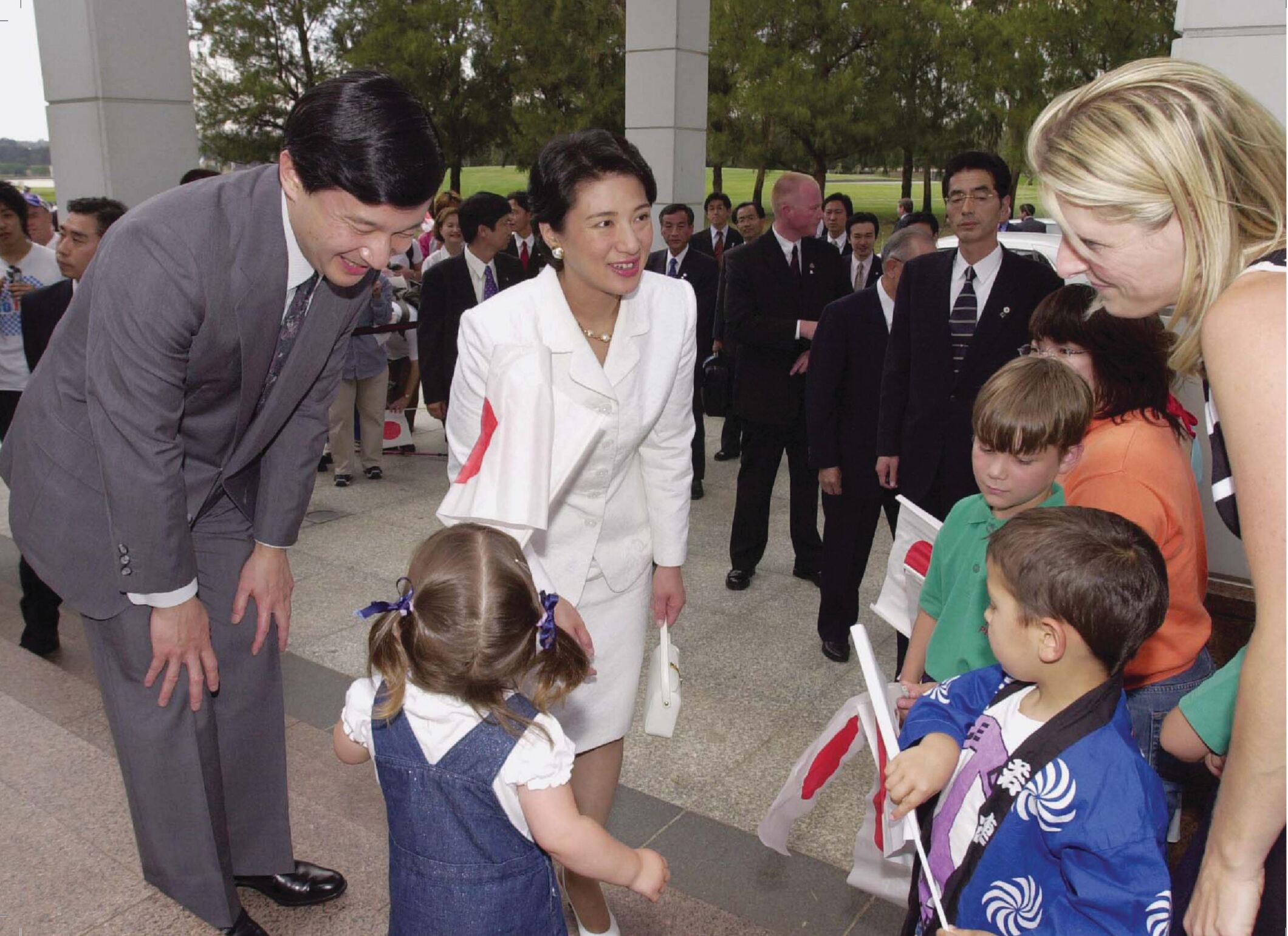 There have been a number of significant moments in our 37-year relationship. In 1988, Questacon hosted then Prime Minister Takeshita Noboru during his visit to Australia to celebrate the Australian Bicentenary, and in 2002 Questacon hosted a special visit by then Japanese Imperial Highnesses Crown Prince Naruhito and Crown Princess Masako. When Their Imperial Highnesses (now Their Imperial Majesties) visited Questacon, the local Japanese community was encouraged to come to Questacon to welcome them.
There have been a number of significant moments in our 37-year relationship. In 1988, Questacon hosted then Prime Minister Takeshita Noboru during his visit to Australia to celebrate the Australian Bicentenary, and in 2002 Questacon hosted a special visit by then Japanese Imperial Highnesses Crown Prince Naruhito and Crown Princess Masako. When Their Imperial Highnesses (now Their Imperial Majesties) visited Questacon, the local Japanese community was encouraged to come to Questacon to welcome them.
One Canberra local who turned out was Yuriko, whose 22-year-old son was just a baby at the time. “I have a wonderful memory of meeting Their Imperial Highnesses in 2002. All the mums with babies close to Princess Masako’s baby’s age were pushed to the front to meet them. I brought my 1-year old son, and had a chance to talk with Crown Princess Masako whilst holding him,” Yuriko fondly recalls.
 Questacon has strong relationships with science centres in Japan, including a Friendship Agreement with the National Museum of Science (now the National Museum of Nature and Science) signed in 2000 and a Memorandum of Understanding with Miraikan – The National Museum of Emerging Science and Innovation signed in 2002.
Questacon has strong relationships with science centres in Japan, including a Friendship Agreement with the National Museum of Science (now the National Museum of Nature and Science) signed in 2000 and a Memorandum of Understanding with Miraikan – The National Museum of Emerging Science and Innovation signed in 2002.
The strength of Questacon’s collaboration with Japan has attracted several accolades in acknowledgement. In 2007, Questacon won the International Council of Museums Award for International Relations in recognition of the cooperation with Japanese museums, and in 2008, Questacon was awarded a Commendation by Japan’s Foreign Minister.
Other significant moments in Questacon and Japan’s relationship include the 20th Anniversary celebrations with karakuri ningyo (Japanese traditional mechanised puppets from 17th-19th Century) workshops and hosting the Japan-Australia Robot Festival in 2009.
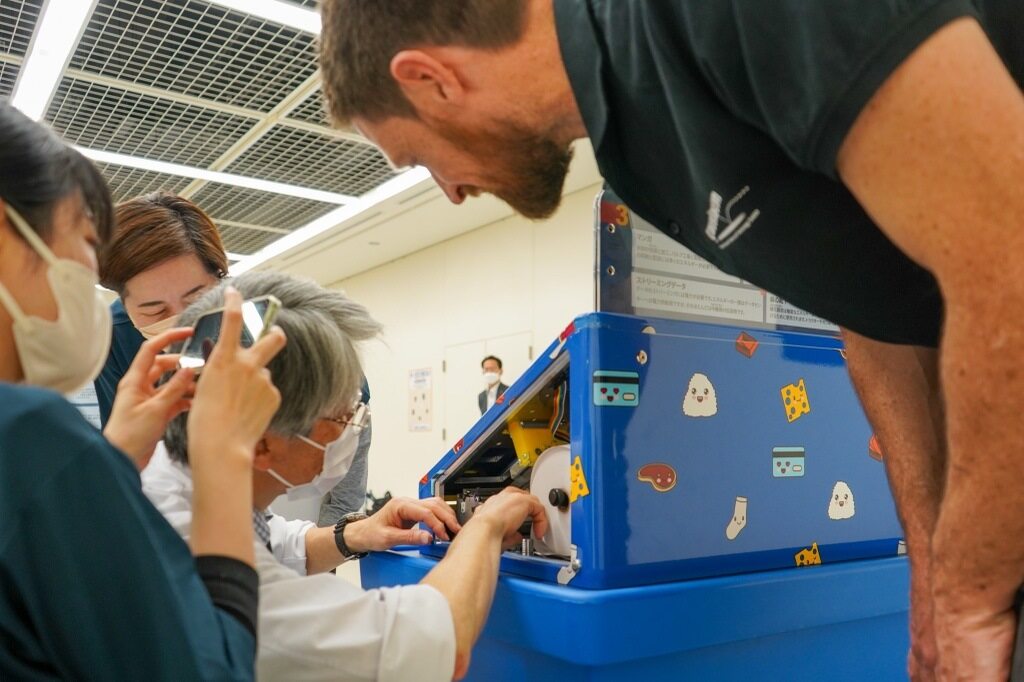 As part of Questacon’s 25th anniversary year, the 2014 Science Circus Tour Japan programme commenced as an expression of friendship and gratitude for Japan’s role in Questacon’s establishment. The tour symbolised a landmark partnership and collaborative endeavour between Questacon and the National Museum of Emerging Science and Innovation, Miraikan. The tour was supported by the Department of Foreign Affairs and Trade through the Australia-Japan Foundation.
As part of Questacon’s 25th anniversary year, the 2014 Science Circus Tour Japan programme commenced as an expression of friendship and gratitude for Japan’s role in Questacon’s establishment. The tour symbolised a landmark partnership and collaborative endeavour between Questacon and the National Museum of Emerging Science and Innovation, Miraikan. The tour was supported by the Department of Foreign Affairs and Trade through the Australia-Japan Foundation.
After the main exhibition at Miraikan, the tour then travelled through communities affected by the 2011 Tohoku earthquake and tsunami off the east coast of Japan. Thirty science circus exhibits were used in public exhibitions at each location and two science shows were co-created and presented by Australian and Japanese science communicators. As a legacy of Questacon’s relationship with Japan, the schools and venues participating in the tour were gifted the touring exhibits by Questacon upon completion of the tour.
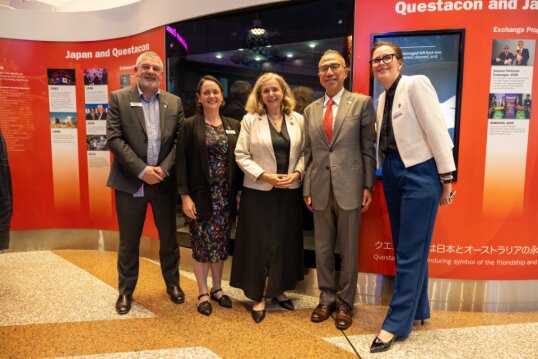 Questacon headed to western Japan for the 2018 Science Circus Tour Japan. This 5-week tour to 4 communities was a collaboration between the Centre for Public Awareness of Science at the Australian National University, the Australia-Japan Foundation, the Japan Science Museum Foundation, the Osaka Science Museum, Miraikan and regional science centres. In 2018 Questacon also hosted volunteers from Osaka Science Museum to exchange science shows and workshops, and Dr Yoshioka Akiko, Goodwill Ambassador from Osaka Science Museum, performed science shows for the public in Questacon’s Japan Theatre.
Questacon headed to western Japan for the 2018 Science Circus Tour Japan. This 5-week tour to 4 communities was a collaboration between the Centre for Public Awareness of Science at the Australian National University, the Australia-Japan Foundation, the Japan Science Museum Foundation, the Osaka Science Museum, Miraikan and regional science centres. In 2018 Questacon also hosted volunteers from Osaka Science Museum to exchange science shows and workshops, and Dr Yoshioka Akiko, Goodwill Ambassador from Osaka Science Museum, performed science shows for the public in Questacon’s Japan Theatre.
In 2023, Questacon travelled back to Japan, as part of a partnership with Supporting Partner, INPEX. This visit began with an event hosted by the Australian Embassy marking the arrival of 8 interactive Energy Exhibits created by Questacon, which were gifted on behalf of the Australian Government to Joetsu Science Museum in Niigata. Questacon also delivered 2 workshops at Joetsu Science Museum to build the skills and capacity of science centre professionals and enthusiasts, empowering them to deliver captivating science theatre and engage visitors on the fascinating topic of energy literacy.
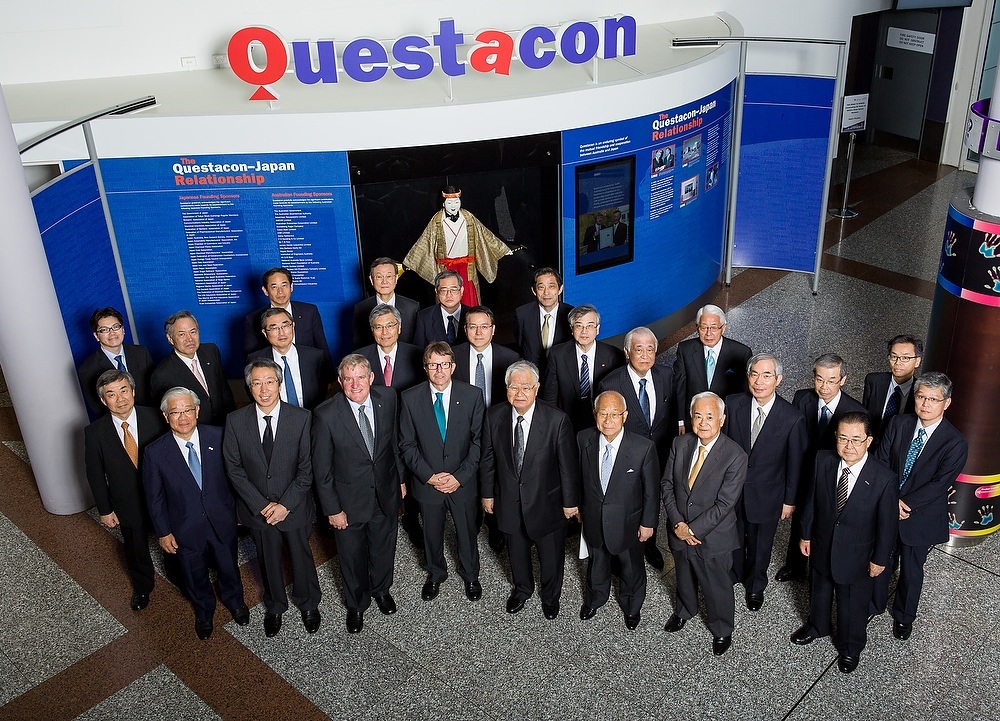 Questacon has acknowledged the significant support and cooperation from Japan through the naming of the Japan Theatre, and the Japan Wall. The graphical display on the Japan Wall acknowledges the significant contributions from the Japanese Founding Sponsors and also features the Karakuri puppets which were gifted to Questacon at the opening in 1988.
Questacon has acknowledged the significant support and cooperation from Japan through the naming of the Japan Theatre, and the Japan Wall. The graphical display on the Japan Wall acknowledges the significant contributions from the Japanese Founding Sponsors and also features the Karakuri puppets which were gifted to Questacon at the opening in 1988.
Looking to the future, Questacon is now undertaking preparations for its participation in the World Expo 2025 to be held in Osaka, under the theme “Designing Future Society for Our Lives”.
Most recently, Questacon honoured the very beginning of the relationship with Japan by hosting the Ambassador of Japan to Australia His Excellency Mr SUZUKI Kazuhiro as the guest of honour at Questacon’s 35th anniversary event.
Questacon will continue to honour the relationship with Japan seeking to build on our strong history, through cooperation and collaborative initiatives which will benefit the people of both Australia and Japan.
As a project funded jointly by the governments, business communities, and people of Australia and Japan, Questacon stands as a perpetual symbol of the mutual friendship and goodwill between our nations.












